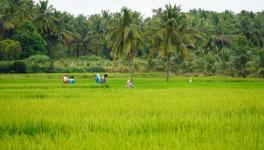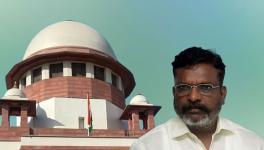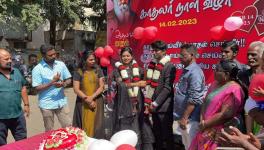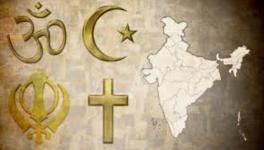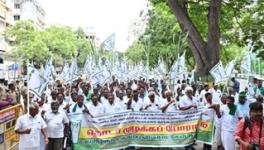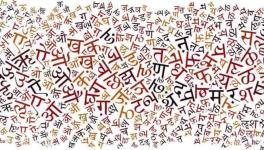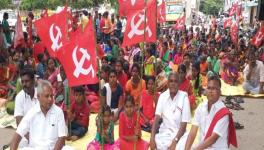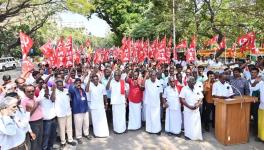“English is My Master; Tamil is My Beloved…”
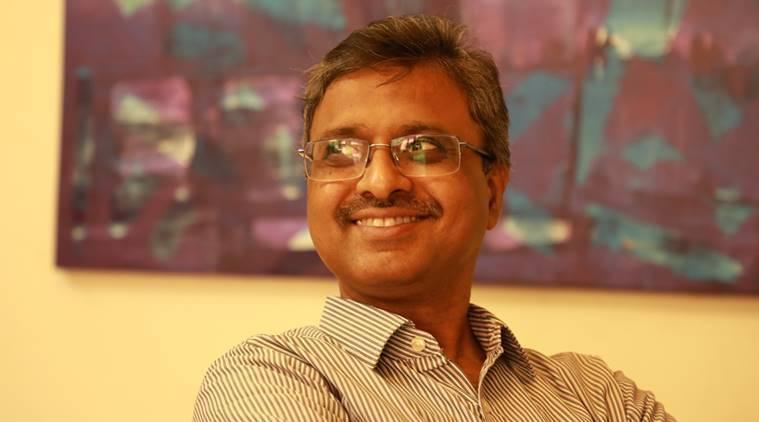
Professor A.R. Venkatachalapathy (Chalapathy to his friends) is a well-known cultural historian, bilingual writer and translator who has published studies in Tamil as well as English. His books include The Provence of the Book: Scholars, Scribes and Scribblers in Colonial Tamil Nadu, In Those Days There Was No Coffee: Writings in Cultural History, Who Owns That Song? The Battle for Subramania Bharati’s Copyright, The Brief History of a Very Big Book: The Making of Tamil Encyclopedia and a definitive edition of Puthumaipittan’s short stories. He has been a Professor at the Madras Institute of Development Studies, Chennai.
Venkatachalapathy talks about his work in this conversation with literary critic, poet and translator, E V Ramakrishnan.
E.V. Ramakrishnan (EVR): As a bilingual writer your interests have been wide-ranging and varied. Your study, The Province of the Book: Scholars, Scribes and Scribblers in Colonial Tamil Nadu, has opened up several issues vital for the study of cultural history in Indian languages. In Kerala, we will soon be celebrating 200 years of the history of the printed book. Against this background, how do you evaluate the impact of print on the idea of literature? Did it reconstitute the idea of ‘literature’ as something written and read in the privacy of an isolated individual? From your experience of studying Tamil literature, would you say that the modern reader is alienated from the oral literature of the past that existed before the arrival of print? Is there a crisis here?
A.R. Venkatachalapathy (ARV): I see print as ushering in a profound mental transformation, if not a revolution in Indian society. At the risk of exaggerating, I can compare it only with the beginnings of scribal culture in many parts of India at various points in time. The focus on the orality of Indian culture has somewhat underestimated the pervasiveness of scribal culture. Millions of manuscripts of the pre-print era have survived, putting the lie to India being a predominantly, if not an exclusively, oral culture. It was the entrenchment of scribal culture that acted as a deterrent to the advent of print. In The Province of the Book, I talk about the physical proximity of the great Saiva scholar and commentator Sivagnana Munivar to Tranquebar, the fecund locus of print technology in the eighteenth century, but we don’t know if he ever set his eyes on a printed book. As long as textual knowledge production was restricted to certain social classes and well served by a scribal culture, the potential of print technology was not realized.
Here one must understand what print technology meant before the mid-nineteenth century. Rather than multiple copies rolling out of a fast-paced machine, it was a laborious and time-consuming process; it was more an artisanal craft than a form of mechanical production. Though much, much faster than manual copying, it was by no means an Aladdin’s genie.
Until the early nineteenth century, print was very much the preserve of Christian missionaries; even the Company was not really invested in it. Only when a social transformation that we call modernity begins, print takes root. That explains why despite the fact that the first book in India was printed in 1577 (the earliest Tamil moveable types were cast in Goa and Kollam), we are only now celebrating 200 years of the birth of the Malayalam book. It was when modern education expanded slowly, and the state instituted a rule of record and paper, that print’s profound potential began to be realized.
Coming to literary texts, we need to distinguish between production and consumption. For a very long time, even after the use of print technology, literary composition was oral. When we think of writing now, we imagine a person sitting before a blank screen – possibly with a cup of strong coffee – and tapping into the keyboard and expecting a clean copy to emerge on the screen. A generation ago, a writer sat at a table or held a writing pad. But for a very long time, poetry was composed mentally, and only later committed to writing. The prolific Tamil lyricist and poet Kannadasan (who passed away only in 1981) never wrote a line: all his writings were dictated to a trusted amanuensis. In many parts of India, especially in Kerala, poetry is still consumed aurally. When ONV (Kurup) recites a poem, it has echoes of a pre-print culture.
But of course, print breeds new genres of writing and their own distinct forms of consumption. Silent reading by visually scanning the text is eminently a product of print. We also find that lines in a poem, when printed, are arranged to visually identify the verse form. But it is the novel with its focus on the individual, and the narrativization of his/her action and thought, that lends itself to private reading. The irony is that this very genre is now the most popular in its audiobook form.
Digital technology has reinforced the concept of literature as a cultural product to be consumed in private and in isolation. Even discounting the high proliferation of images on the mobile/computer screen, the consumer is, in fact, reading more and more – from short text messages to news feeds and long forwards and various forms of texts not excepting creative writing. The audiobook form too, notwithstanding its parallels to pre-print orality, is consumed in privacy, say when one is commuting long distances alone.
As long as human beings live in a society, I don’t think they can escape orality. Individuals face crises, considering how enslaved they can be to habit – here the habit of reading a printed book. While being disruptive for people socialized in earlier forms of consumption, new technologies are opening up ever newer opportunities.
I remember, in the early 1980s, as a young reader and an aspiring writer, looking for Neruda’s Twenty Love Poems and a Song of Despair from library to library, private book collection to book collection; I located it after three years and copied it out by hand. That I would say is a crisis. Not ordering it on Amazon or downloading a pirated pdf on the internet. I am not discounting for a moment the impact of the medium, but I don’t foresee the disappearance of valued literary texts only because the medium has changed.
EVR: Your book, In Those Days There Was no Coffee: Writings in Cultural History is a pioneering work in cultural studies. Very few would have imagined so much could be read into a simple cup of coffee. You trace not only the history of consumption of coffee and tea in colonial Tamil Nadu but also link this history to the emergence of the Dravidian movement and the creation of a canon in Tamil language and literature. What are the underlying building blocks of this narrative? How did you hit on the idea of this book and, if you don’t mind answering (forgive my audacity) how did you collect the materials for your close analysis? (Note: There are of course hints in the book, but I would like the readers to know how knowledge production could happen in very innovative ways in contemporary disciplines.)
ARV: In the twenty-five years since my coffee paper was first presented, I have never failed to be amazed by the enthusiasm with which it has been received in Tamil, English and Malayalam (published in Pachakuthira). Few academic papers are so fortunate.
Let me say in some detail how it came to be written – perhaps it might help younger scholars how not to write research papers.
I suppose, nobody sets out to write a paper such as this. Research for me is a creative process, and it kind of happened. As a literary reader I read extensively and eclectically, mostly for the pleasure it affords. It was my interest in printed texts that led me to work for my PhD thesis on the history of the book. Tamil modernity has always fascinated me, and given the severe constraints – physical and pecuniary – on what repositories one could access (for instance, the only library to hold a comprehensive nineteenth-century imprints was the British Library and for us then London was little more than a dot on a map). One focussed therefore on what one could access here – even that was constrained in the pre-internet age – mostly early twentieth century books and periodicals with some late nineteenth century stuff thrown. (Here, I must add that, Tamil holdings are richer than for the other Dravidian languages.)
My way of tackling a research project is to immerse myself in all the material of the period – the exact opposite to how sociologists and anthropologists work; they don’t step into the field without a theoretical framework. As I was doing my PhD research in the early 1990s, I was reading and re-reading all the print material I could lay my hands on – novels, short stories, poems, essays, reports, reviews – and it suddenly struck me that references to coffee begin to crop up in the 1920s, followed by a flurry in the 1930s and stabilizing finally in the following decade. Any decent historian, I suppose, is alert to potential topics for future research; I sensed one such topic in coffee. Initially I made mental notes, but soon I began to make notes on slips of paper and cards, and stuffed them into a used envelope. As the folder bulged my search became more systematic. Please recall that Tamil books don’t usually carry an index (and of course, ctrl+f was unknown then) and so one actually has to read whole books or at least have the ability to skim pages quickly to find references to find what one is looking for. Simultaneously, I was also looking for secondary and theoretical literature which was sparse. In those pre-JSOTR times, it meant always keeping your eyes open, looking at bibliographies and skimming a variety of journals whenever opportunity presented itself. There are always gaps. You’ll notice that my paper makes no reference to Sidney Mintz’s Sweetness and Power which would have been a perfect complement – for how can there be coffee without sugar. But I was blissfully unaware of Mintz then.
I delight in working in the archive and won’t write if I can help it. Such a scholarly paradise however exists only in dreams. When an opportunity presents itself – which for us academics is the invitation to a conference or workshop – I force myself to write. In this case, it happened to be the first of Professor K.N. Panikkar’s series of cultural studies workshop at Wagamon, in late 1997.
Writing is postponed until the pressure builds up like a piston in a cylinder. When the writing can no more be postponed, I lay out my cards/slips, and arrange them in a sequence. But when I write, much like a novel’s characters dragging the author, the historical narrative leads me. I am barely in control. As I write more references come to my mind. But there are certain aspects that I am particular about. I belong to a generation which lamented the absence of a historical sense among Indians. So, my early work, especially, is steeped in evidence. I try to marshal as much data as I can. I may be a poor writer, but I do have an eye for the telling detail, the apt phrase and the juicy quotation – you can see them littered throughout the text. Since coffee is an offbeat theme, I wanted to pile up more evidence than usual. Pace Benjamin, I tried to ambush my reader with a phalanx of quotations and rob her of her conviction.
Two threads run through me as a historian. I am fascinated by the past as a different country and I try to communicate that fascination to my reader. And in some larger, if vague sense, I hope by doing that to understand the social and human world in which we live in. I may have fallen far short of these ideals, but they remain my ideals nevertheless.
There is no cultural artefact that does not in some way reflect and constitute social process. Some less and some more so. Coffee belongs to the latter category. Given that coffee intruded from outside and was accepted only after a phenomenal amount of resistance, it is hardly surprising that this should reveal to us so much about caste, class, gender, culture, and what not.
EVR: Many of your books were first written in Tamil and then translated in English. For instance, your book on the copyright battles over Subramania Bharati makes for interesting reading. The book raises questions of ownership of cultural creations as well as the issue of the relation between the author and his community. Strangely, this important book was noticed in the West, but Indians seem to be indifferent to such issues in an age when intellectual property rights are being extensively discussed. What attracted you to this theme and what are the larger questions you raise in the book?
ARV: Yes, a good part of my work is originally written in Tamil and later rewritten in English – though in the case of the coffee paper it was the other way round. But let me emphasize this: I never translate; I rewrite. I go back to my cards and notes again, and start afresh though having a pre-existing narrative really helps.
The two versions are framed differently. When I write in English, it is usually for an academic audience. A historiographical context is already there and I try to engage with earlier work. My Tamil audience is primarily literary – as a rule, academics in Tamilnadu are loath to read – I jump into the thick of the matter right away using an opening gambit that hopefully hooks the Tamil reader. I use only those quotes and citations that work in the language that I write in. If some quotes don’t travel well in English, I avoid them. There is a constant tussle between the need to hold the reader’s attention and the imperatives of scholarship. Literary allusions differ in each language. Each language has its own genius, and it is best to respect it while always looking for ways to cross-pollinate the two. For instance, English writers don’t often take recourse to proverbs. A Tamil writer who eschews proverbs and idioms can only produce an impoverished prose. (The Tamil writer Sundara Ramaswamy is an exception. As a self-conscious modernist I can’t recall a single instance of his using a proverb or an idiom or a line from an old poem in his writings.) Since Tamil is my primary language, I take more liberties. English is my master; Tamil is my beloved.
As a historian one is always looking for the exceptional. What is more unique than the instance of a state taking over the copyright of a writer and putting all his works in the public domain. The nationalization of Subramania Bharati’s works by the then Government of Madras in 1949 is an unprecedented event in the history of global copyright, and I therefore wanted to write about it. An invitation to a book history conference, at Jadavpur University, gave me the occasion to rehearse this story.
Having taken my first baby steps into the literary world in the heady days of the Bharati birth centenary (1981–82) I have an abiding interest in his life and work. Apart from the considerable amount of material gathered from the non-governmental archive I located a bulky file on the subject in the Tamilnadu Archives. The whole story – the demand for making a valued cultural icon’s work public, free of the clutches of copyright – threw up a host of questions about intellectual property rights; cultural iconicity; the place of cultural artefacts in the public sphere and in democratic processes.
After the initial version as a research paper written in English, I wrote it up as a book in Tamil with the title: Bharati: Kavignanum Kappurimaiyum. As you can see it has an alliterative title and the characteristic Tamil ‘um’, the conjunction for ‘and’. ‘Kappurimai’ is a neologism for ‘copyright’. The narrative is structured as a detective story whose outcome is known at the very outset much like ‘the chronicle of a death foretold’.
When my publisher–friend, Kannan Sundaram (incidentally, the son of Sundara Ramaswamy) read the manuscript he suggested that this could fly as a book in English. That’s the genesis of Who Owns That Song?: The Battle for Subramania Bharati’s Copyright. Though the English book repeats the narrative of the Tamil book you can see that it is prefaced by a chapter on Bharati’s life and work and that the narrative is intercut by the introduction of the dramatis personae. One reviewer wrote that it reads like a film script. But unlike for Tagore or Premchand, there is no real market for an English book on Bharati. That however is a different matter.
EVR: In Kerala, the discipline of cultural studies/cultural history is still undeveloped. The way you explored the past of Madras/City to write the history of Madras/Chennai to write Chennai, Not Madras: Perspectives on the City, a book that reads like fiction, has given researchers a model for writing urban history. Your extensive use of chap books, brings out the value of such sources for serious academic research. A number of histories criss-cross your reconstruction of the past of Chennai, from trams and transport to labour movement, Gandhi and the emergence of Periyar into prominence. (Incidentally, the city of Madras belonged as much to Kerala, as to Tamil Nadu, those days, because we, in Malabar, at least, were part of the undivided Madras state.) You had a wealth of materials to choose from. What were the different threads you were working with in constructing the central narrative? Why is micro history or urban history a neglected field in the discipline of Indian history?
ARV: Though the history of Chennai fascinates me I make no claims to be an urban historian. I was deeply dissatisfied with the kind of popular history of Chennai that was being dished out by the likes of S. Muthiah. You may be shocked to know that Muthiah knew little Tamil – it was rather his badge of honour. Imagine a historian of Calcutta who doesn’t read Bengali – if such a specimen existed surely, he could not have escaped the fate of being drawn and quartered. Once S. Muthiah stated in a Hindu column he had recently gathered that Vedanayakam Sastri (1774–1864) and Vedanayakam Pillai (1826–1899) were two different persons! Existing popular histories focussed exclusively on the British, and the cream of native society.
When I was invited to edit a coffee table book by Marg, I seized the opportunity to present a different story. For a start, I got three major Tamil writers – Sundara Ramaswamy, Ashokamitran and Prapanjan – to write about their experience of Chennai. Stephen Hughes wrote on getting to the cinema on trams. I wrote about the controversy regarding the Telugu claim to the city. Srivathsan wrote about the Dravidian reimagining of the public architecture. Ramu Aravindan shot exclusively for this book, and A.V. Ilango did a wonderful picture essay. To my lasting regret I could not get anyone to write on the working class. I see the city as a democratic space over which there is always a struggle, and I wanted the book to reflect this contestation. The history of a city cannot be the history of gora sahibs and their Indian elite stooges alone. It is in reaction to this I once wrote an essay on fraudsters in the city. The work on chapbooks that you refer to is the subject of a full-length monograph in Tamil that I published in 2014. Someday I hope to write a historical ethnography of working-class life as well as popular entertainment in Chennai.
EVR: You have edited the variorum edition of the collected works of Pudumaipithan in Tamil. (I am familiar with his works through Sahitya Akademi’s publication of the translations of Pudumaippithan’s “Complete Short Stories” in English done by R.E. Asher and V.S. Subramaniam.) You have argued that along with Subramania Bharati, Pudumaipithan remains one of the two axes around which modern Tamil literature revolves. He was a prominent writer of the journal Manikodi which launched the modernist movement in Tamil. Why do you consider Pudumaippithan one of the finest Tamil writers of his generation? What has been his legacy to Tamil literature?
ARV: I consider Pudumaippithan (1906–1948) not just as one of the finest of Tamil writers of his generation but of all times. Bharati and Pudumaippithan are the two axes around which much of twentieth-century Tamil writing turned. Unfortunately, his writings do not travel well in English or in other Indian languages, and therefore you’ll have to take my word for his achievements. The R.E. Asher/V.S. Subramaniam translation is a great disservice to Pudumaippithan’s genius.
Bharati was at heart a romanticist, and you can find coeval parallels in most Indian languages. From what I have read in and of other Indian languages there is no equivalent to Pudumaippithan. He welded Tamil prose into an expressive vehicle that could voice a modern sensibility. Bharati wrote prose too. But the gap that Pudumaippithan leapfrogs in less than a generation is astonishing to say the least. He gave literary status to the spoken register effortlessly. In the about hundred short stories that he wrote he experimented widely: naturalism, realism, fantasy, meta-fiction, retellings … Nationalism; Dravidian ideology; Marxism everything find an echo in his stories. But his scepticism overrides all other emotions, and few Tamil writers have exhibited his range of humour: wit, sarcasm, irony, satire and parody. The ruthlessness with which he reviewed books has scarcely been matched. The sixty odd stories from world literature that he translated into Tamil from English are also indicative of how au fait he was with the contemporary literary world.
EVR: You have been close to Sundara Ramaswamy whom you have described as an “Arch Modernist”. You have translated J.J.: Sila kurippukal into English. Sundara Ramaswamy was one of those rare bilingual writers whose deep understanding of both Malayalam and Tamil literatures is reflected in this modern classic. As a novel of ideas, it has few parallels in modern Indian literature. I would like know why do you read J.J. Some Jottings as a “thorough-going critique” of Tamil culture and society? The novel has been translated into Malayalam, but has not been discussed much, despite its strong portrayal of Malayalam literary culture and in-depth analysis of a range of ideas from religion to Marxism.
ARV: When J.J.: Sila kurippukal was first published in 1981 it created a literary sensation. Despite having made his literary debut in 1951, Sundara Ramaswamy’s oeuvre was then limited – but he had a big reputation. With the publication of this novel, it became formidable. As many Malayalam readers are aware it is structured as a biography of a Malayalam writer called JJ (Joseph James) – one inspiration is said to be C.J. Thomas. The narrator of the novel is a Tamil writer called Balu, who attempts to write the biography of JJ: the life of JJ is intercut by Balu’s own search for JJ’s biographical material. The second part of the novel comprises of selections from JJ’s dairy entries. The novel credibly sets up JJ’s life in the context of the times – the politics of Travancore state, the Syrian Christian background of JJ, the rising tide of nationalist politics, the emergence of the Left movement and progressive literature …. Though it is ostensibly about mid-twentieth century Kerala no Tamil reader can fail to see that Sundara Ramaswamy is actually talking about, and critiquing Tamil society. That’s how the novel was received by Tamil readers. But it is a mistake to confine it to such a reading. The novel’s treatment of the souring of idealism and the disillusionment with institutions, apart from other elements, makes it relevant across linguistic confines.
EVR: Just as you have used chapbooks in narrating the past of Chennai, you have used little magazines for tracing the trajectory of post-1950 Tamil literature. What does the emergence of the little magazine movement in Tamil signify? How did the modernists who used this medium view the rise of the Dravidian movement? Do you think the conflict between the elitist little magazines and the mass-circulated popular magazines reflects deeper social divides? What happens to these social divides in the post-1990 period?
ARV: The extant scholarship on the little magazine movement in various Indian languages is still scanty. Resistance to mass culture was a commonality. That apart, I surmise that the impulse behind these little magazines in various little magazines was varied. My comments are therefore restricted to the Tamil scene, and my argument needs to be fully worked out.
It is only from the 1920s, and more especially from the time of the Civil Disobedience Movement (the late 1920s) that Tamil journalism became a mass phenomenon. Until then there were few journals – political periodicals not excepted – that touched the five-figure mark. This situation changed with the arrival of what was called ‘quarter anna magazines’ – periodicals that were priced at a very affordable quarter of an anna. There was a flurry of magazines. At this time, all magazines, whatever their print run, were addressed to a large audience and not to a segmented market. There has been a tendency to pit ‘the popular’ Ananda Vikatan against the ‘literary’ Manikodi. This is only a retrospective reading. All major writers were published in various magazines. It is only in the 1950s that the divide emerges.
I see two forces at work. One is the rise of the Dravidian movement, especially after the DMK split from Periyar in 1949. The second was the triumph of print capitalism. Before the rise of the Dravidian movement, Tamil writers were overwhelmingly Brahmin. Now Brahmin writers sought refuge in the mass-circulated magazines which were all edited and or owned by Brahmins – Ananda Vikatan, Kalaimagal and Kalki. (Kumudam, launched in the early 1950s, though not Brahmin-owned, tried to occupy the same space.) Other Brahmin writers who both rejected the politics of the DMK and the aesthetics of the mass-circulated magazines moved to the niche little magazines. They held an antagonistic attitude to the Dravidian movement, and either ignored or abused the Dravidian movement. Ka.Naa. Subramanyam, and a little later, Venkat Swaminathan were primarily responsible, through their writings in the English national press, for the negative attitude about Tamil culture outside Tamilnadu. As can be imagined, the aversion was framed in aesthetic, rather than in, political or caste terms.
Only some exceptions such as Jayakanthan, Thi. Janakiraman and Ashokamitran could straddle both worlds. This divide was perhaps inevitable but unhealthy. After 1990 – with the provincial, national, and global changes –this divide breaks. There has been a dramatic change in the social and regional profile of Tamil writers since then.
My understanding is that, in Kerala, a mass-based Left movement which evaded the caste question but was heavily invested in the cultural field foreclosed such a divide. I could be wrong.
There cannot be universal cultural products. Literary markets will have segments and niches. But an institutional divide of high and low is unacceptable, even revolting.
EVR: By the 1990s, the rise of Women’s writing, Dalit Writing invalidate the very foundations of this rupture between the high/low divide. How do you evaluate the nature of this shift in sensibility that occurred in the 1990s? Would you say that questions of identity politics still remain central to contemporary Tamil literature? In your essay on Perumal Murugan, you show how the rise of Hindu fundamentalism in Tamil Nadu played a role in the campaign against the novel, Mathorubhagan. What happens to the larger project of social emancipation in the context of the revivalist surge?
ARV: Yes, very much so. Strong movements such as the Dravidian movement or the Left movement in Kerala and West Bengal have a steamrollering effect. The Dalit movement, active in Tamilnadu well into the 1930s, got subsumed into the Dravidian movement. Women’s writing – almost exclusively Brahmin – found its platform in the mass circulated magazines. However, by its very nature mass magazines can give no scope to radical views. The non-Brahmin movement combined questioning of the caste system and the hegemony of Brahminical ideology, articulation of pride in language, and questioning the monolithic conception of a nation. A major achievement of the movement is that it kept Hindu nationalism at bay. On the flip side, the empowerment of the backward castes has had its own fallout. Many intermediate castes have become aggressive and have become fertile ground for Hindutva mobilization. Hindutva forces lose no opportunity – if not actually create such opportunity – to whip up communal animosity. That is what happened in the case of Perumal Murugan’s Madhorubhagan. It’s difficult to believe that a sensitive tale of a childless couple could bring a town to a complete halt and lead to the demand for the writer’s head. The strategy of pushing Hindutva through the cream of Brahmins and a sprinkling of upper castes having failed to yield fruit, Hindutva organizations are now strategically focused on intermediate castes and depressed castes. The mobilization of seven Scheduled Castes under a single category of Devendrakula Vellalars and their demand to be removed from the list of Scheduled Castes is indicative of this.
EVR: You have written extensively on Periyar and his ideological battles. Periyar remains the most important Tamil ideologue of the last two hundred years. The rise of the Dravidian movement transformed not only Tamil polity but contributed to a new political philosophy rooted in the region’s cultural history. Would you say the Dravidian movement has run its course, or do you feel it is capable of reinventing itself in response to the challenges of the times? (Note: You have translated a Tamil book on the role of Periyar in Vaikkom Satyagraha. It was from an article on this book that I came to know that Periyar was present when Gandhi met Narayana Guru. It is a moment of cultural and political history loaded with symbolism!)
ARV: A new generation of young people are discovering Periyar. They draw inspiration from his ideas and life and that will have its own impact. In the 1980s, when I was growing up, Periyar was mostly read only by diehard party members. His name was rarely mentioned in polite company, and as I pointed out earlier, the literary world of little magazines maintained an antagonistic relationship with all that was Dravidian. Over the last two decades, there has been a dramatic shift and he has captured the imagination of a new generation. The Tamil public sphere in now animated by discussions on Periyar. Concomitantly there are a number of academic scholars working on Periyar and his movement.
I am glad that you noticed the work on Periyar’s lead role in the Vaikom Satyagraha. It’s a full-length monograph in Tamil by my fried Pazha. Athiyaman. It remains to be translated into English and Malayalam. What I provided were two snippets in English translation – both published in the Hindu. This deeply researched work provides a day-by-day reconstruction of the Satyagraha, evaluates the contribution of every leader, and places the struggle in the larger context of the nationalist and anti-caste movements. Though its writing was triggered by polemical attacks on Periyar the book itself is a solid piece of scholarship, based on an enviable range of source material in Tamil, Malayalam and English. It is shocking it has taken nearly a century for such an important movement to find its historian. For all its richness I am still unable to explain why the Kerala intellectual world has not produced such a history as yet.
EVR: As a bilingual intellectual, and translator, how do you see the future of bilingualism in this country? Though Kerala has much in common with Tamil Nadu, we find there is hardly any meaningful dialogue between Tamil and Malayalam writers. Is a writer like Sundara Ramaswamy possible in today’s world? I am aware of the occasional translations of Tamil books that come out in Malayalam, and a few initiatives made by writers like Jeyamohan to bring Tamil and Malayalam writers together. But they only bear out the larger point that Malayalam writers look only Westward for inspiration. Everyone wants to be translated into English and an award for an English translation becomes a coveted prize. Is English destined to be the language of intellectual enquiry in India? Ramachandra Guha lamented the passing away of the bilingual intellectual in India. Is Tamil nationalism still a potent force that can challenge the hegemonic advance of right-wing fundamentalism?
ARV: Let me first nuance bilingualism. Ramachandra Guha has for long been lamenting the death of the bilingual intellectual. But by bilingualism, he means English and another Indian language. This is a sorry state of affairs indeed. But far more tragic is the near-complete death of bilingualism in Indian languages.
How many writers can you name who write in two Indian languages with equal felicity? Sukumaran and Jeyamohan write in both Tamil and Malayalam. Sundara Ramaswamy was comfortable in both languages but rarely, if ever, did he write in Malayalam. Sitanshu Yashaschandra and G.N. Devy, I understand, write in both Marathi and Gujarati. Your study of modernism in Marathi, Malayalam and Hindi is rare in that you have accessed the poetry in the original. In my own discipline, there are few historians in India who can comfortably access more than one Indian language. Manu Devadevan is an exception that only confirms the rule. It is scholars from the American university system who are able to acquire this kind of linguistic competence. This is a larger epistemological problem that really worries me.
I am a strong votary of the linguistic reorganization of states. But the downside of it has been the poison of deep linguistic animosity that welled up from this churning. The border areas, rather than being the point of conversation, are zones of distrust and conflict. Forget the violent conflict in the Belgaum region between Kannada and Marathi. In the Kanniyakumari region Malayalam has lost its place. In the northern borders of Tamilnadu a similar tension exists between Tamil and Telugu. It is culturally and historically impoverishing.
There is a rich archive of Malayalam documents pertaining to the Kanniyakumari region. Tamil historians can’t read these documents and Malayalam historians are not interested in them. So, I suppose, we have to wait for a trained American scholar to arrive! Similarly, in Thanjavur, the Mahratta period was a time of great cultural efflorescence. The court records are in Modi script but there are practically no Tamil historians to read them; Marathi historians wouldn’t care less – so it’s all a big void. I am sure we can multiply such instances. Further, given the strong linguistic pride, times of cultural hybridity are suspect. A major figure like Serfoji II – who is undoubtedly a great precursor of modernity – figures only marginally in mainstream Tamil history.
The Indian state, given its obsession with Hindi and Sanskrit, has done little to foster bilingualism. In any case, rushing to appoint Hindi officers in every central government office is hardly the way to develop Hindi. Nor will the focus on astrology, yoga and ‘cow science’ encourage Sanskrit scholarship.
I see a budding new interest in the humanities and social sciences. Hopefully, some of it will turn to language study as well and perhaps we can hope for a better linguistic future.
This conversation was conducted through email in February-March, 2021. It appeared in Malayalam translation in Anyonyam, a quarterly devoted to arts and culture, edited by E.V. Ramakrishnan, in its issue of April 2021.
E.V. Ramakrishnan is a literary critic, poet and translator writing in Malayalam and English. He retired from the Central University of Gujarat as Professor and Dean of the School of Language, Literature and Culture Studies. He lives in Payyanur, Kerala.
Get the latest reports & analysis with people's perspective on Protests, movements & deep analytical videos, discussions of the current affairs in your Telegram app. Subscribe to NewsClick's Telegram channel & get Real-Time updates on stories, as they get published on our website.









